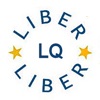Conference report: Texts and Literacy in the Digital Age: Assessing the Future of Scholarly Communication
DOI:
https://doi.org/10.18352/lq.8014Abstract
Throughout the Western world digital communication technology is rapidly invading a knowledge system based on centuries of print. Of late there has been considerable attention for some less attractive effects of this invasion. For example, Nicholas Carr’s The shallows (2010) and Sherry Turkle’s Alone together(2011) each see technological inventions unintendedly but infallibly targeting our weakest spots as human beings, appealing to a natural tendency to intellectual and social laziness. Both authors stress the undeniable fact that technology affects us — and strongly so. But about the extent to which technology actually determines social consequences the jury is still out. In Carr’s mind there is no doubt that we are already falling for the allurements of digital communication technology hook, line, and sinker. Turkle, on the other hand, likes to believe that people can (and ought to) draw a line and actively resist their darker effects.Downloads
Download data is not yet available.

Published
2011-10-10
Issue
Section
Articles
License
Copyright (c) 2011 Corina Koolen, Adriaan van der Weel

This work is licensed under a Creative Commons Attribution 4.0 International License.
How to Cite
Conference report: Texts and Literacy in the Digital Age: Assessing the Future of Scholarly Communication. (2011). LIBER Quarterly: The Journal of the Association of European Research Libraries, 21(1), 166-169. https://doi.org/10.18352/lq.8014





